The New Zealand Tech Alliance is a group of independent technology associations from across New Zealand that work together to ensure a strong voice for technology.
Visit Tech Alliance

The New Zealand Tech Alliance is a group of independent technology associations from across New Zealand that work together to ensure a strong voice for technology.
Visit Tech Alliance
The Internet of Things – Accelerating a Connected New Zealand was launched on 29 June in Wellington by the New Zealand IoT Alliance. Read the Executive Summary or the full research report.
The Internet of Things is a collection of real life things that are connected to the internet. These connected things collect and exchange data. Data from a connected world enables us to make better decisions, problem solve and improve productivity.
While IoT has been around for many years, it has been the subject of heightened interest in more recent years. Much of the current IoT hype is driven by consumer devices such as fitness trackers and smart white ware. However, the real value for IoT is in enterprise and government. Research by IDC, a specialist global technology research firm, found that there is much interest in IoT in New Zealand but very few deployments of substance. New Zealand was also found to be ranked highly as a nation in terms of IoT readiness yet a lack of understanding of the economic value appears to be holding back investment. The economic value that accelerated uptake of IoT could bring for New Zealand economy appears significant. Economic analysis by Sapere, an economic consultancy, estimates a potential net benefit for the New Zealand economy over 10 years of $2.2 billion in present value terms across a mere nine common IoT applications. There are many ways to stimulate the uptake of IoT with most stemming from an increased awareness of the potential value that IoT can bring.
New Zealand has a Vibrant IoT Ecosystem
In New Zealand, the IoT ecosystem is fragmented, many vendors solve some pieces of the puzzle but few provide end-to-end solutions. However, there are a growing number of positive signs that interest and awareness of IoT is improving. Some of the more significant IoT projects underway include:
There are a number of drivers and enablers spurring awareness and interest for the Internet of Things in New Zealand. These can be placed in three categories:
Local IoT Uptake is Slow
While all of these projects indicates an active IoT supply in New Zealand, the demand uptake is slower. The research found that only 14% of New Zealand enterprises have deployed an IoT solution.
While many trials and proof of concepts are taking place across the country, scaled deployments are rare. Investment is currently inhibited by:
New Zealand is ready
The research found that 70% of organisations that have, or are planning to implement IoT, believe that IoT will be transformational or strategic to their business. This suggests that once organisations understand what IoT can do for them, it becomes increasingly important.
New Zealand, as a nation, is well prepared to take advantage of the opportunities IoT brings. According to the IDC G20 IoT Readiness Study, despite having a relatively small GDP and population compared with other G20 nations, New Zealand scored well on measures such as ease of doing business, government effectiveness, regulatory quality, innovation and education. New Zealand has the right ingredients to be ready for the growth of IoT. However, now it needs to put those ingredients together to create a winning formula. Central and local governments should work with each other and the industry to grow knowledge, design and implement sound policies that continue to cultivate innovation, maintain adequate technology infrastructure and sustain the environment necessary for the IoT’s growth. The key role for government is as a catalyst for this growth.
Key Opportunities
The Potential is Significant
An analysis of the economic benefits of IoT across nine significant IoT applications estimated a potential net benefit for the economy over the next 10 years of $2.2 billion with a plausible range from $1.1 billion to $3.3 billion.
The economic analysts derived this number from the productivity and efficiency benefits of a mere nine applications of IoT across agribusiness, cities, utilities, asset management and manufacturing. The potential benefit to the total economy could be significantly greater.
To benefit however, the key change required is creating awareness, education and improving knowledge while managing challenges, such as security and privacy of IoT data. Vendors should seek to turn discussions from technology led to business led. Buyers need to better understand that data is the value of IoT, not the technology itself. Data should be considered a strategic asset. The industry needs to collaborate and build alliances to create the momentum to enable scaled deployments.
The Government can be a catalyst for growth by using Government tools to increase awareness, educate, create policy frameworks for IoT security and privacy, and make it easier for startups and innovators to negotiate commercialisation. A cohesive Government vision and strategy for the IoT will help New Zealand to deploy unified city initiatives throughout the country. Government sponsorship of one or more flagship IoT initiatives would also accelerate New Zealand’s transition into a Digital Nation.